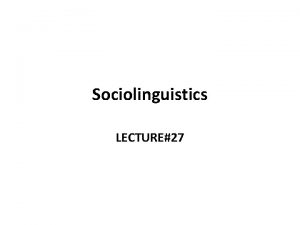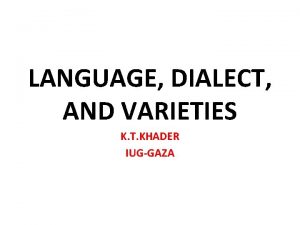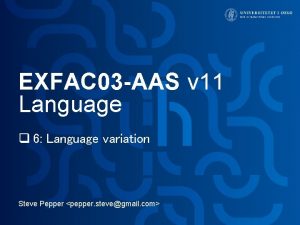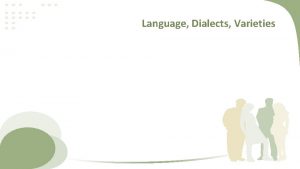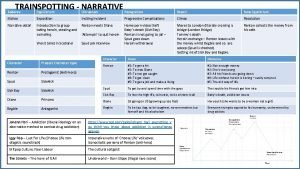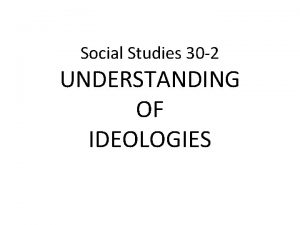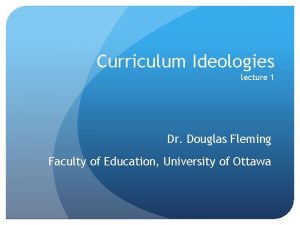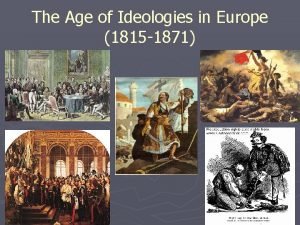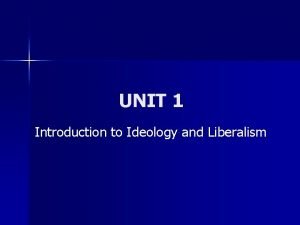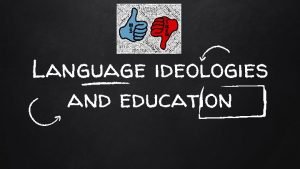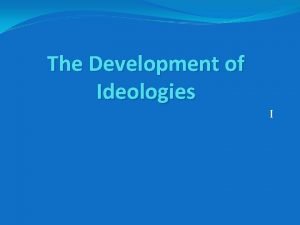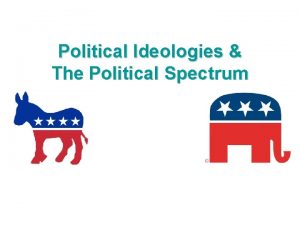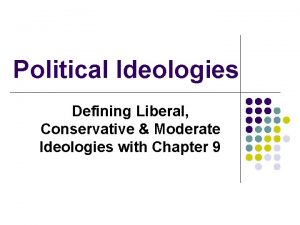Language varieties language ideologies language teaching ED 53















- Slides: 15

Language varieties, language ideologies & language teaching ED 53 Language Minority Education

In table groups… • Discuss whether a native speaker can speak his/ her native language badly. (Your view before you did the reading vs. after? ) • Come up with definitions for: 1) 2) 3) 4) Language, Variety Dialect, Accent Standard language and standard language ideology Languaging, appropriacy arguments

Regional variation – Geographic divides between the uses of particular sounds or words – Atlas of North American English (Labov et. al) – New England, New York City and the Mid Atlantic States, The North, The Midland, The South, The West, Canada – Arose through separation of speakers by settlement patterns, social life & mobility, geography – Qualitative differences – Most extreme variation among the most isolated, oldest, & least educated community members

What do you call these things?

NMUSE quiz 1 Frank: How is Bob? Mary: Bob worries a lot anymore. What does Mary mean? a) Bob doesn’t worry a lot anymore. b) Bob still worries a lot. c) Bob worries a lot nowadays. d) Other

Social variation • Variation associated with group membership: age, social class & network, race or ethnicity, gender (but category does not determine use) • Quantitative differences - One social group uses feature more than another - Attn to speech • Both regional and social dialect differences are regular and systematic

NMUSE quiz 2 Tabitha: Is she married? Jamal: She BIN married. What does Jamal mean? a) She’s been married before but isn’t now. b) She’s married now and has been for a long time. c) Other

Language ideologies • LIs are beliefs about languages and speakers of languages that are reflected in what people say and do. They are structured by power relations and are enacted in everyday interactions. (Freeman-Field 2005) • LIs are intertwined with personal values and beliefs, and influence choices people make in a variety of settings, academic and otherwise (Mc. Groarty 1996). • Beliefs about language that shape or stand-in for beliefs about speakers of that language • Though making judgments based on race, ethnicity, or class may be “forbidden by law and social custom and perhaps by a prevailing sense of what is morally and ethically right…we have no such compunctions about language” (Lippi-Green 1997, p. 64).

Studying Language ideologies • What are some ways in which we can discover the language ideologies circulating in a particular context? • Matched guise (Lambert 1967, Rosenthal 1974, Giles & Powesland 1975) • Towards other languages or dialects • Why might we study LIs? To what end? What are some of the impacts they have?

A classroom example Mr. T announces the day’s lesson plan for his 9 th grade English class; the focus is on improving academic writing skills. Acknowledging that the school district has not adequately prepared them for the work they’re expected to do at their age, he explains, “I know you’re supposed to know this already, but we’re not going to write essays yet until we can write good, solid paragraphs. ” Mr. T then reviews his five-step writing process with the class. In doing so, he tells them, “Don’t use African American vernacular, but use Standard English. Don’t talk like Will, talk like Carlton. Not street talk, not slang, but Standard English. ” Fieldnote from a local school, 10/2012

What LIs are communicated in this teacher’s directions. How do you know? What else do you notice about this excerpt? Evaluate the teacher’s goals and the means he has chosen to achieve them. What are the potential impacts of these LIs on his students? If you were him, what might you do differently, if anything?

BREAK

Historical approaches to NMUSE in education Deficit, Difference, & Domination – Early theories: School failure attributed to “verbal deprivation” / “culture of poverty” (Head Start) – “Eradication approaches” --- naturalized – Early research debunked (e. g. by Labov 1969) – “Linguistic mismatch”– home vs. school • Literacy experiences, question types, participation styles (e. g. S. B Heath, Susan Philips) – Teacher attitudes influence student outcomes – Domination: focus on the power dynamic inherent in these differences and the ways they’re addressed in schools

Educational Interventions • Contrastive analysis approaches – Taylor 1989 – De. Kalb County, Georgia • Dialect Readers – Worked for the Scandinavians – Bridge Readers (USA) • Standard English Proficiency in Oakland (1981) & Oakland Ebonics Resolution 1996 • Academic English Mastery in LAUSD – Jeopardy Game (Do you speak American? ) • Critical Language Awareness/ Pedagogy

Varieties of English and ELLs • Little scholarship – Steifel 1982, Goldstein 1987, Ibrahim 1999 • • • Double teaching/ learning challenge More than one target Importance of peer influence Differences for L 2 speakers? Distinguishing interlanguage from NMUSE – He don’t speak Spanish. – He went to his aunt house. • Would what works for African American AAE speakers work for L 2 learners of AAE? Challenges to implementation the same?
 Language and dialect in sociolinguistics
Language and dialect in sociolinguistics Language dialect and varieties
Language dialect and varieties Language varieties
Language varieties Language dialect and varieties in sociolinguistics
Language dialect and varieties in sociolinguistics Democratic socialism
Democratic socialism Discourse and ideology
Discourse and ideology Social 30-1 textbook
Social 30-1 textbook Two dimensions of political ideologies
Two dimensions of political ideologies Political ideology ap government
Political ideology ap government Obsolescent “frontier” civilization
Obsolescent “frontier” civilization Introduction to the curriculum ideologies
Introduction to the curriculum ideologies An age of ideologies
An age of ideologies Elizabethan ideologies
Elizabethan ideologies Political ideologies cows
Political ideologies cows Elements of liberalism according to heywood
Elements of liberalism according to heywood Types of ideologies
Types of ideologies
